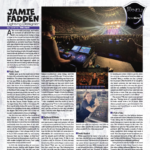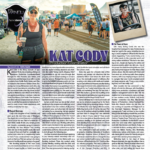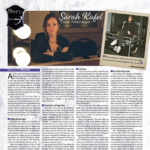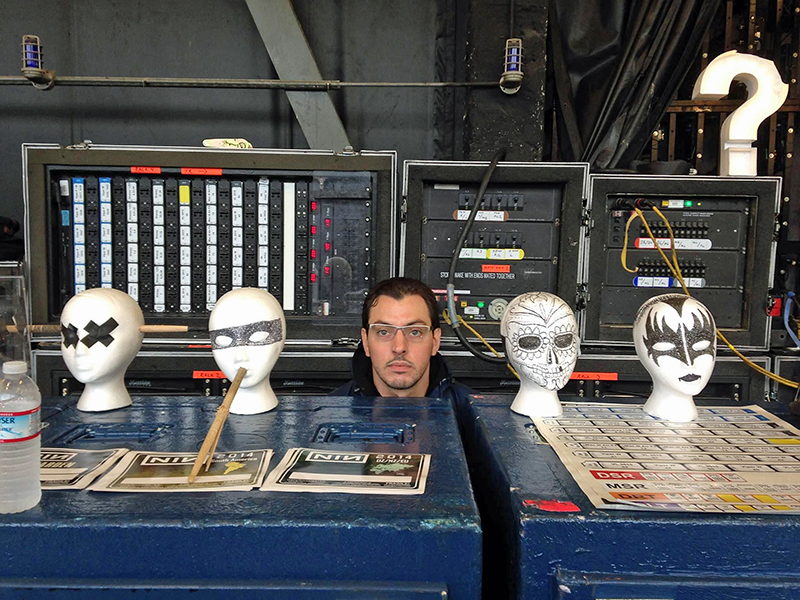
In this continuing series, PLSN directs a key light on the Next Generation’s shining stars.
Jason Baeri recognized his interests early in life. It was ballyhoos, not baseball, that excited him. Growing up surrounded by New York’s arts scene, his parents encouraged him to pursue his passions. When the family moved to New Jersey, he set his sights on the path of entertainment by enrolling in a vocational school with a strong performing arts program.
“It’s been somewhat of a magnet school for entertainment folks from Jersey for the last 40 years,” Baeri says. “There’s got to be a hundred road, theatre and show-business people out there who are all rooted in the Red Bank Regional High School Visual and Performing Arts Academy program.”
Joe Russo, head of the drama department, put the youngster to work in the Count Basie Theatre for practical learning under technical director Mike Jacoby. “At the time I knew nothing of live music, save the Asbury punk rock shows I went to get my teeth kicked in and be angsty,” he remembers with amusement. “But I walked into the theater for the first time at age 14 on July 4 to a room full of VL5’s and VL6’s, and I was hooked.”
For the next three years, the young stagehand absorbed basics at the Basie and in the many small arenas, theaters and clubs on the Eastern Seaboard. Among other things, he learned how to roll gear in and out of trucks. He learned how it hurt when a sandbag hit him in the head. “It was the best training,” he notes. “Seeing the endless combination of worlds you could build with truss and motors was just the best entry into the business I could have had.”
After high school, Baeri found work at New Jersey-based BML Lighting, going on the road in 2001 with The Allman Brothers Band. To further his formal training, Baeri moved to Los Angeles to study at the California Institute for the Arts, finishing in 2006 with a BFA in Theatrical Lighting Design.
He freelanced a while for PRG, taking the Black Eyed Peas on the road and engaging in TV studio work. While programming an opera, he was offered a full-time job at ACT Lighting to conduct training sessions and provide tech support for MA products.
Baeri worked at ACT Lighting through the end of the MA1 console, helping Bob Gordon launch the grandMA2 in the U.S. He wanted to stay to the end of the process, and after six years he was ready to change his life and move on.
Going Solo
Two relationships that developed during those tech support years were with designers Leroy Bennett and Cory FitzGerald, who were working together at the time. The two became the catalyst to his new freelance career, Baeri says. “Cory kept asking me when I was going to go freelance, and I said I will when you have a project for me.”
Cory chimes in: “I was excited to get Jason involved in our world. He had incredible console skills and I knew he could really get into the process of creating complex looks based around music. We spent some fun nights going through the processes and techniques I’d developed along the way working with Roy, and it was a natural fit to have him jump in the programming seat and drive the ship.”
Jason’s first programming job with them was for Rihanna’s tour in 2011. Already a big fan of Bennett’s work, Baeri says, “I was in love with the Van Gogh color swaths of The Cure, the knife-like precision of Prince, the deep cuts of Nine Inch Nails.”
Over the years he’s programmed and taken on specific roles in all of the following Bennett production designs: Nine Inch Nails’ Tension Tour 2013, Maroon 5 in 2015, Rammstein in 2017, as associate lighting designer/programmer for Kelly Clarkson, Ariana Grande’s Sweetener tour in 2019, and as assistant designer/programmer for Lady Gaga’s Joanne world tour in 2017-2018 (with associate designer Harry Forster). The list goes on.
Baeri is grateful to work in various capacities with Bennett, which has been the majority of his career to date. “Every time we sit together on a show I learn something new about how to look at the world,” he notes. “Whatever I have to offer as an artist has been made better by the opportunity to work with him.”
Baeri also programmed for the PEDG/Nimblist team for Soundgarden’s 2013 tour (designers Justin Collie and Kille Knobel) and a host of other LDs he grew up idolizing. He counts himself lucky to be part of a hive mind of creative professionals including Loren Barton, Brian Jenkins, Harry Forster, Bobby Grey, Kille Knobel, Paul “Arlo” Guthrie, Abbey Rosen Holmes, and the Earlybird Visual team. He’s learned “TV lighting lessons a plenty” from Tom Kenny, Mike Appel, Mike Scricca, Tiffany Spicer Keys and Andrew Giffin, and was schooled in his corporate acumen by Christian Methot. “I am nothing but a collection of lessons learned from some of the best in the game,” Baeri acknowledges.
Early Career Highlights
Highlights were many, but there was a moment in time when he thought his career would end early on a disastrous note. But it wasn’t his fault.
He explains: “My first time out as a lighting director on anything major was Nine Inch Nails through South America early on in my career. I’ll never forget getting three songs to the end of the show and watching my lighting rig, during a ballad, slowly start strobing, then dying, then strobing in a different section, then dying again and finally settling in the death rattle. At the end of the massacre I was left with 15 out of 300 lights for ‘Head Like a Hole,’ one of the most epic hooks in the artist’s arsenal. Legendary tech Ryan Tilke raced around like The Flash unplugging and resetting every possible thing in the rig, but nothing helped. Every light fixture spawned another failure. We were chasing individual leaves in a forest fire. I thought this was the end of my career. Just as I’m walking backstage to what I’m sure is a firing of epic proportions, the call comes over the radio: ‘The f-ing generator ran out of gas.’ Thankfully I was spared, but I will never forget the terror of watching a beautiful piece of theater turn into a flaming ball of disappointment fueled by an inability to correct the problem in time.”
Another terrifying moment occurred when Baeri, Loren Barton and Brian Jenkins ended up in North Korea “for just over two minutes.” Ask him about that at the next industry gathering when stories tend to be told.
Programming vs. Designing
While Baeri’s primary business is programming and lighting directing, every now and then he designs a tour. “Programming is a perfect blend of art as idea and art as execution. Design offers you the chance to create a story in an all-encompassing realm and then fine tune the details while also reshaping the story line by line based on the progression,” he describes. “I’m grateful to do both.”
FitzGerald, who has watched his career soar, says, “It’s been amazing to see him continue his journey and grow into quite the accomplished LD!”
An example of his growth is his work with The Weeknd. In 2015, Baeri programmed The Weeknd’s Madness tour for Roy Bennett, which Baeri describes as “a visual spectacle involving roughly 165,000 channels of non-mapped LED.” He recalls, “I still have scars on my fingertips from the manual selections made to all those pixels, but I’m glad we took the time because the show came out to be pretty awesome. Loren Barton [on media server] was slinging pixels with me on that one, and I can say that was some of his finest work.”
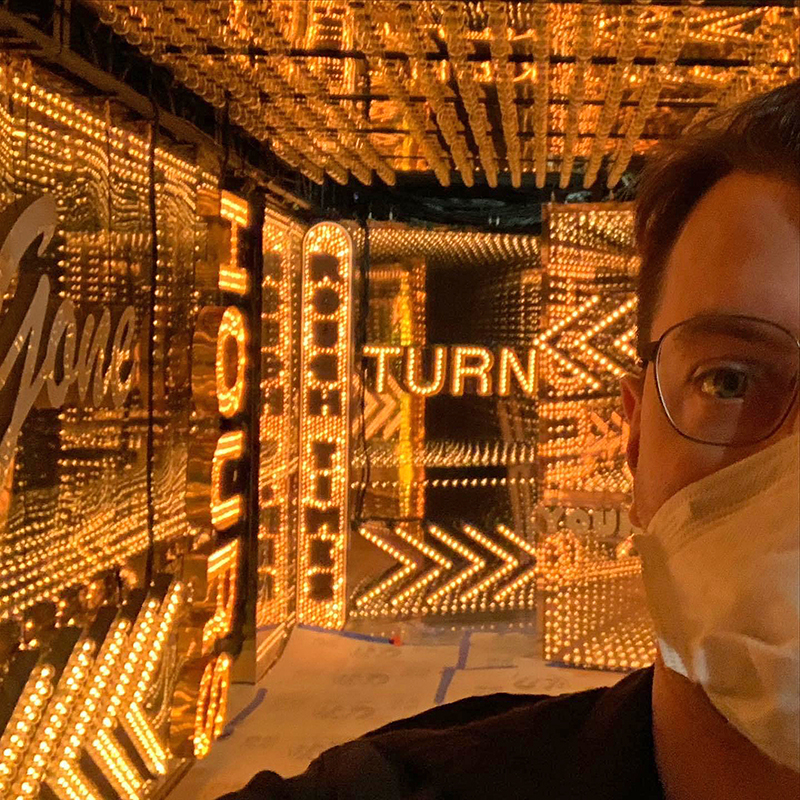
In 2021, Baeri joined the lighting team for The Weeknd’s performance in the Super Bowl Halftime Show, and he’s now slated to design the lighting for the upcoming 2022 tour.
Baeri still works freely with the band as Bennett’s programmer and director when he’s not designing. Beyond that, he adds, he’s got a few irons in the fire, “A blessing after the pandemic we all endured together,” he notes.
“Everyone is hungry to get out there,” Baeri, now based in New York, acknowledges. “But the crews are suffering a lot more. I can go into a television studio with a smaller rig and program a show. But the studio doesn’t need 10 techs, they need only five. So the pandemic affected the tech portion of our industry a lot more. It breaks my heart.”
Again feeling grateful and lucky for whatever work he’s had during this lockdown, Baeri adds, “I’ll be happy to put my efforts back into show business instead of trying to figure out why I keep steaming all the soup out of my soup dumplings.”
